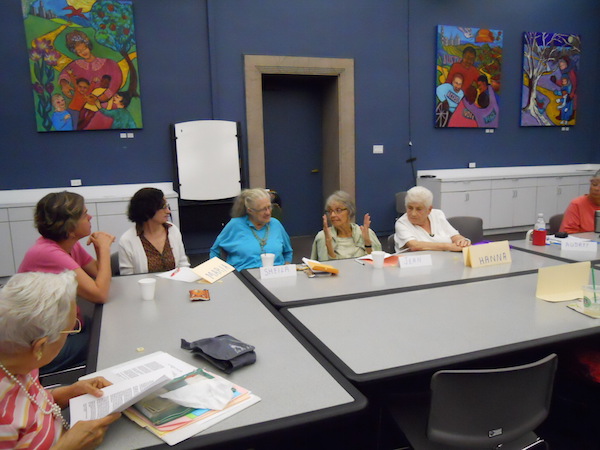Benefits of memoir-writing
July 11, 2015 • 10 Comments • Posted in careers/jobs for people who are blind, memoir writing, Mike Knezovich, teaching memoir, writing promptsEarlier this summer I spoke at a memorial service for a writer in one of the memoir writing classes I lead at Lincoln Park Village. This week a thank-you note arrived from her daughter, and along with the note she included a copy of an essay her mother had written when I assigned “I Have a Dream” as a topic in class.

The grandmother who wrote that essay in2010 started in this downtown Chicago class. Later she attended my class in Lincoln park Village.
The writer addressed that essay to her first grandchild, due to be born a month later. That baby’s upcoming birth was already a dream come true, and the writer used her 500 words to outline her dreams for herself as a grandmother, and her dreams for her new grandchild, too.
That grandchild is four years old now and was able to know her beautiful grandmother. What a gift that essay is for that little girl, and for me, too.
Mike read the essay out loud when it arrived in the mail, and it brought back vivid memories of that writer overflowing with joy when she first read it in class. What a joy for me to hear it again and discover just how many of her dreams had come true before she died this year.
That essay in the mail confirmed what I already know – getting our life-stories down on paper not only helps us keep our minds and memories fresh, it also enriches the lives of our families and friends who will have them to cherish long after we’re gone.
All four of the memoir-writing classes I lead in Chicago are back in session this week after a short summer siesta. Both classes I lead for Lincoln Park Village are full, as is the “Me, Myself, and I” memoir-writing class I lead at Renaissance Court in the Chicago Cultural Center.
But wait! There’s hope! You don’t need to attend a class to start writing your life stories, and you don’t even need a computer – a pen and paper will do. But if you’re someone who needs a deadline, or appreciates an assigned topic, or enjoys meeting regularly with other writers to share written stories out loud, the Thursday morning class I lead in Printer’s Row still has three two openings!
That class meets on the second floor of Grace Place (637 S. Dearborn, Chicago) on Thursday mornings at 10 a.m., and the next six-week session starts this Thursday, July 16, 2015. You don’t have to live in Printer’s Row to attend this class – our neighborhood is a cinch to get to with public transportation. You can register on line for the Printers Row class or email me at info@bethfinke.com to find out how to register and pay by check.



